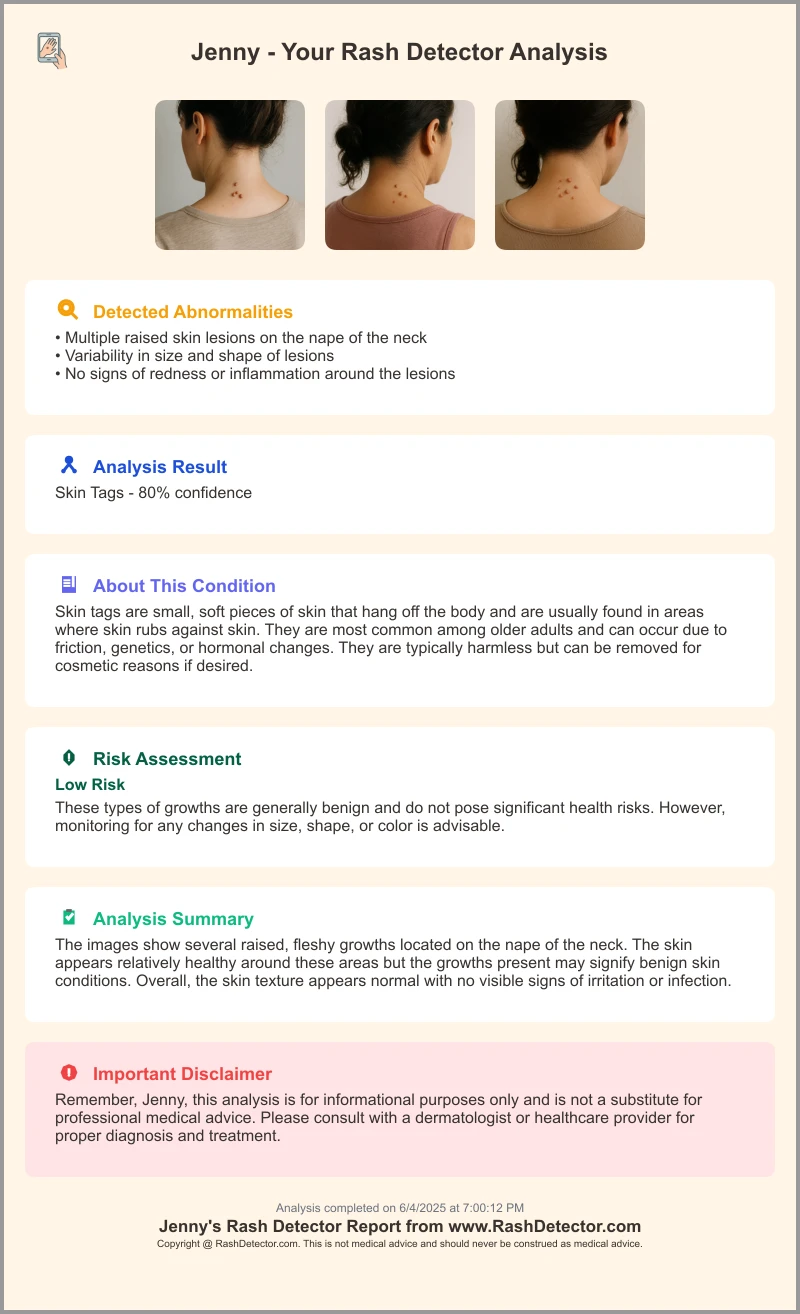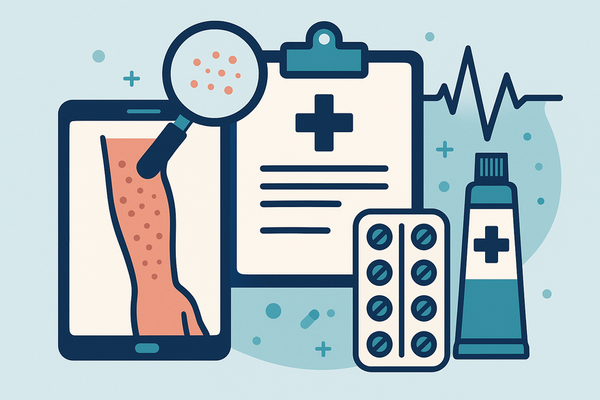Medication Rash Treatment: A Comprehensive Guide to Identifying and Managing Drug-Induced Rashes
Learn evidence-based medication rash treatment strategies, including early identification and prevention, for safe, effective care.

Estimated reading time: 5 minutes
Key Takeaways
- Early identification of drug-induced rashes can prevent serious complications.
- Prompt discontinuation of the culprit medication is the first step in treatment.
- Pharmacologic and supportive therapies relieve symptoms and protect the skin barrier.
- Immediate medical care is essential for severe reactions like blistering or breathing difficulty.
- Preventive strategies and careful monitoring reduce the risk of recurrence.
Table of Contents
- I. Identification of Medication-Induced Rashes
- II. Diagnosis and When to Seek Medical Advice
- III. Treatment Options and Management Strategies
- IV. Prevention and Risk Mitigation
- V. Conclusion
I. Identification of Medication-Induced Rashes
Early identification of drug-induced skin reactions is vital for effective medication rash treatment.
Common Signs and Symptoms
- Redness and inflamed patches
- Itching or burning sensation
- Swelling of skin or eyelids
- Hives (urticaria) that come and go
- Blistering or peeling in severe cases
For more detail on spotting these symptoms, see Identifying and Managing Drug-Induced Rash Symptoms.
How to Differentiate from Other Rashes
- Onset timing: Days to weeks after starting a new drug
- Recurrence: Rash often returns if the drug is reintroduced
- Systemic symptoms: Fever, joint pain, swollen lymph nodes
Risk Factors and Triggers
- History of drug allergies or atopic dermatitis
- Genetic predisposition to hypersensitivity
- High doses or rapid dose escalation
- Polypharmacy (multiple concurrent medications)
II. Diagnosis and When to Seek Medical Advice
Accurate diagnosis is key to safe medication rash treatment.
Self-Assessment Tips
- Review any medications started in the past 2–4 weeks.
- Note if rash onset aligns with dose timing.
- Watch for spread, blistering, fever, facial swelling, or breathing trouble.
Warning Signs for Immediate Care
- Severe or extensive rash covering large body areas
- Blistering or peeling skin
- Swelling of lips, tongue, or face
- Anaphylaxis indicators: difficulty breathing, tight chest, dizziness
Clinical Diagnostic Methods
- Medication history review to pinpoint the culprit drug
- Laboratory tests: CBC, liver and kidney function to rule out systemic involvement
- Skin biopsy for suspected severe syndromes (e.g., Stevens-Johnson Syndrome)
III. Treatment Options and Management Strategies
Effective medication rash treatment follows a stepwise approach under medical supervision.
Immediate Actions
- Discontinue the suspected drug promptly under provider guidance.
Pharmacologic Treatments
- Antihistamines
- Cetirizine or diphenhydramine to relieve itching and urticaria.
- Corticosteroids
- Topical steroids for localized redness and swelling.
- Oral prednisone for widespread or persistent rashes.
- Epinephrine
- Intramuscular injection for anaphylaxis emergencies.
- Immunomodulators/Inpatient Care
- IV steroids or cyclosporine for Stevens-Johnson Syndrome.
- Specialized wound care and fluid management in hospital.
For in-depth management advice, see Managing Drug Allergy Rash: A Comprehensive Guide.
Supportive Care Measures
- Apply mild, fragrance-free moisturizers to soothe dryness.
- Take cool showers and use cold compresses for relief.
- Wear loose, breathable cotton clothing to reduce friction.
- Keep nails trimmed; avoid scratching to prevent infection.
Medication Regimen Adjustments
- Work with your physician to switch to alternative drugs if essential therapies trigger reactions.
Consider using AI tools like Rash Detector to upload images of your rash and get a quick analysis:

IV. Prevention and Risk Mitigation
Proactive steps can reduce the chance of future medication-induced rashes and streamline treatment.
Pre-Treatment Strategies
- Inform all healthcare providers about any drug allergies or past rash reactions.
- Read prescription inserts and medication guides thoroughly.
- Undergo patch testing or graded oral challenges under close supervision for essential drugs.
- Explore additional prevention tips here.
Ongoing Monitoring and Education
- Keep a diary logging medication start dates and any rash symptoms.
- Learn early warning signs of severe reactions: blistering, fever, swollen face.
- Schedule regular check-ins for high-risk patients on multiple or high-dose regimens.
V. Conclusion
Early identification, prompt drug discontinuation, and evidence-based treatment are the pillars of safe care. Supportive measures and pharmacologic therapies relieve symptoms, while prevention strategies mitigate future risk.
Seek urgent medical attention for severe or systemic signs—blistering, facial swelling, or breathing difficulty—versus routine follow-up for mild cases. Maintain open communication with healthcare providers and personalize treatment plans to ensure effective, lasting relief.
By staying vigilant and proactive, you can manage medication-induced rashes confidently and reduce the likelihood of recurrence.
FAQ
- How do I know if a rash is caused by medication?
- Look for a rash that appears days to weeks after starting a new drug, especially if accompanied by itching, redness, or blistering. Recurrence upon re-exposure also suggests a drug cause.
- When should I seek immediate medical care?
- If you experience extensive blistering, peeling, facial swelling, difficulty breathing, or signs of anaphylaxis, seek emergency care right away.
- Can I treat a mild drug rash at home?
- Mild rashes may improve with antihistamines, cool compresses, and moisturizers. However, always consult your healthcare provider before stopping or changing any medication.
- How can I prevent future drug-induced rashes?
- Inform all providers of your allergy history, consider patch testing for essential drugs, and keep a detailed medication diary to flag new reactions early.





